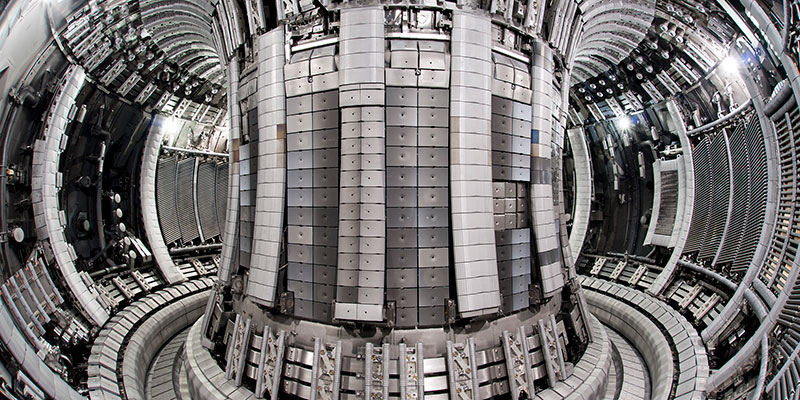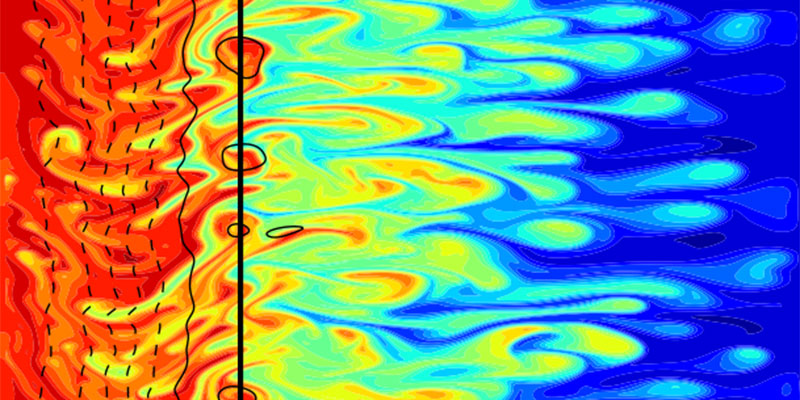
Magnetic confinement fusion
Magnetic confinement fusion explained
In magnetic confinement fusion (MCF), the fuel (deuterium and tritium) is heated to a temperature which is ten times hotter than the centre of the Sun. It is then an ionised gas: a state of matter referred to as a plasma. We confine this plasma, holding it away from material surfaces (which would otherwise suffer serious damage) by a combination of magnetic fields in a toroidal (doughnut-shaped) geometry.

